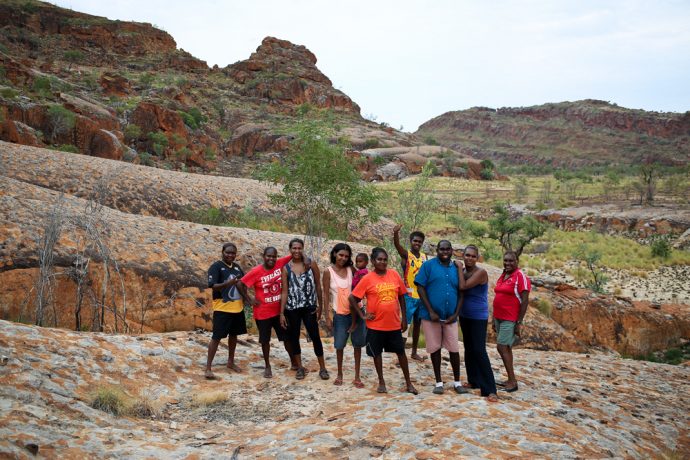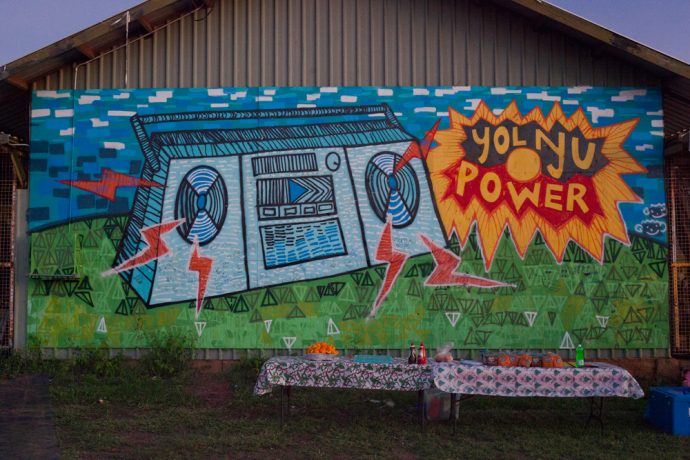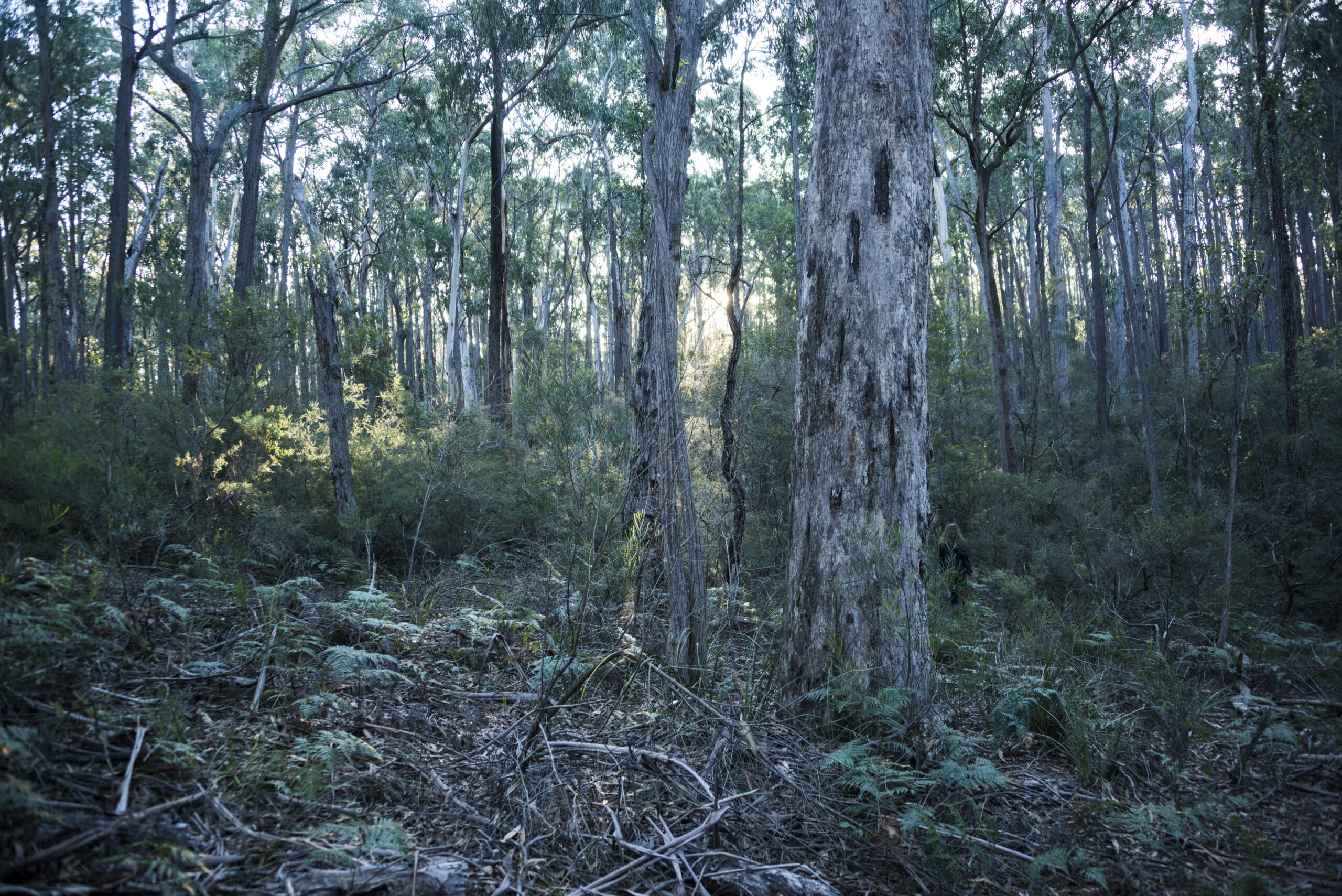Ngurra, Wanga

Three years ago, photographer Tim Hillier began documenting Indigenous Hip Hop Projects as they toured their youth cultural programs throughout regional and remote Australian communities. Since then, he’s been behind the lens watching young people dance, paint, perform and find a voice for each of their unique stories – and in doing so, has been adding to his own.
For the past three years, I have been working with Indigenous Hip Hop Projects (IHHP) in remote communities of Australia, participating and documenting youth workshops in music, dance and culture, promoting health, wellbeing and self-determination. Despite what the mainstream media might portray of these communities, the reality is far richer and multi-faceted. If you ask the young people we work with, they would not have it any other way.
Ngurra and Wanga – both terms mean ‘land’ or ‘country’, in the areas where these photos were taken. I would like to acknowledge traditional owners past and present of these lands. Thank you for your beautiful countries.

This sign is near the communities of Looma and Camballin, in Western Kimberley. Looma is the land of the Lungurra Lizard, and the languages of Walmajarri, Nyikina and Mangala. The word Looma is Walmajarri for ‘blue tongue lizard’, while Lungurra is Nyikina for the same. Near Looma is the town of Camballin, which was built to house the workers of a now defunct rice farm. The residents of Camballin now mostly work in the schools in Looma and Jarlmadangah. In leaked documents about the closure of WA communities, Looma and Jarlmadangah were listed, but not Camballin. For some reason, Aboriginal communities are ‘not sustainable’, yet the white settlement (with fewer people than Looma) is. Gina Rinehart has recently bought the cattle stations close to these communities, signalling more developments in the ‘mining to dining boom’.

These are some of the community members of Looma. With backgrounds from three different language mobs, they all join together to educate students in modern and cultural ways. The hills that surround Looma have a well-known dreaming story about the blue tongue lizard and her children. The Nyikina and Mangala communities have lived peacefully near each other for thousands of years and – after forced removal from their communities in the 1950s onto mission camps – are trying to reclaim their lands and cultures. During those years, some mission camps would be full of up to 52 different language groups. After many years of decimation from trying to live the European way, some tribes went back to their homelands and set up new communities. Looma was one of the first in the Kimberley, and the three different groups (Nyikina, Mangala and Walmajarri) worked to build a future together.

These two boys are looking at the swimming hole known as Caroline Pool. Caroline is known as Wimirri in Jaru language. Halls Creek is considered the middle of the Kimberley and is one of the largest towns along the Great Northern Highway. The languages here are Jaru and Kija. Even at the end of winter/dry season there is water in both the Caroline Pool and Palm Springs (15km further down the Duncan Highway). Swimming in the Kimberley is one of the most enjoyed activities.

This photo was taken in the community of Warburton, the largest community in the Ngaanyatjarra Shire. The grand final consisted of a ‘round robin’ of all the teams in the shire: Wingellina, Blackstone, Jameson, Tjukurla, Warnarn, Warburton and Warakurna. Two or three games are played at night, because it is too hot to play during the day. The 2014 Grand Final was played over five days, with Jameson the victors. After winning, they drove through Warburton parading their trophy (for all of town to sneer at). The whole shire gets together for the finals, and Warburton is abuzz with activity for the week preceding and after the games. Off field, women play softball, kids have dance battles, there’s a ‘cutest baby’ competition and a raffle for a car. The love of football encompasses the entire community.

The Wangkatjungka football team is the Crows. They play in the Central Kimberley Football League. Their opponents are the Bayulu Bulldogs, Yiyili Tigers, Yakanarra Dockers, Fitzroy Hawks and the Noonkanbah Blues. All the games are played in Fitzroy Crossing, which is only about an hour-and-a-half drive for the Crows. They often train without boots on this ground that is pure red dust, which does not seem to affect them at all. While the men play, all the kids play their own match, or play basketball. In the community, football is serious, and basketball is for fun. The drive to watch the matches is not a hindrance – driving up to 600km for a game is normal in WA.
A friend who plays for the Wyndham Crocs has been scouted by several AFL teams. Yet he has refused to move, as it would mean not being able to go fishing with his Grandma everyday. To him, family and community mean more than money and fame.

Yolngu is the most spoken of the languages in Arnhem Land. This wall is in the community of Yirrkala, 18km away from the mining town of Nhulunbuy. Yirrkala is where the 1963 bark petitions came from. The bark petitions were documents written in Yolngu and sent to parliament house to protest the construction of a mine on traditional lands. These are considered to be the first formal claims for native title. While the mine was eventually built, this has not stopped the Yolngu, who have become a leading voice for the rights of all traditional owners. Yolngu Power.
Thanks to Tim for compiling this album of his Western Australia and Northern Territory travels for us – we’re always interested to see where he disappears to each month. To check out more of Tim’s photography, and the awesome music videos he creates as part of Indigenous Hip Hop Projects, head to his website.
